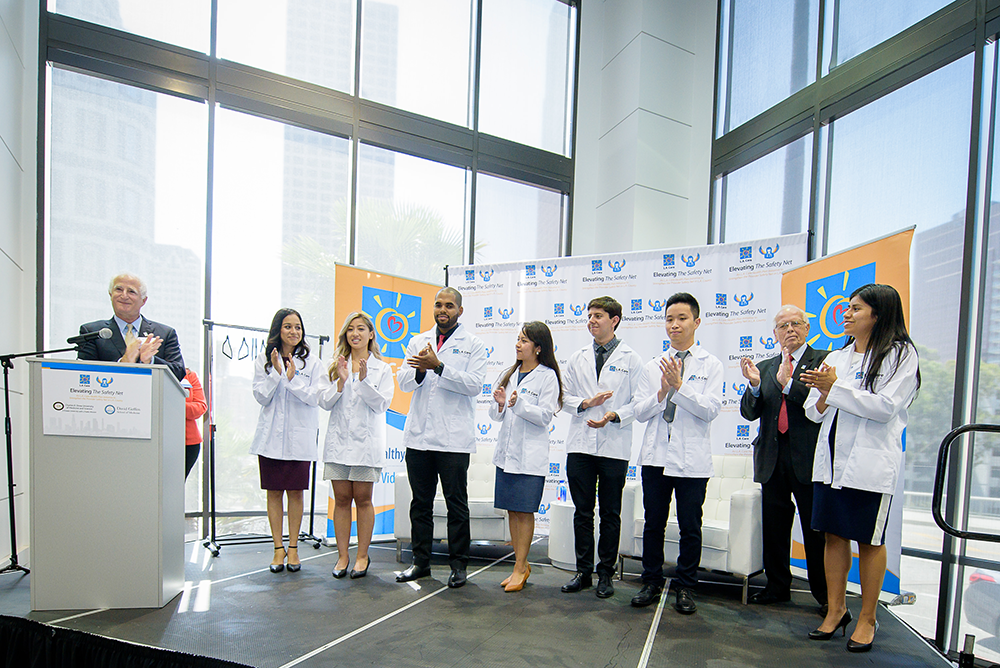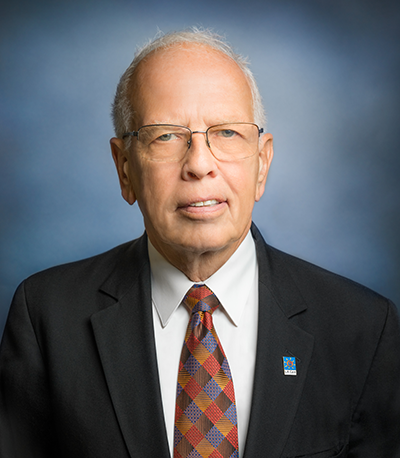Featured Exec John Baackes, CEO of LA Care Health Plan
Although he dreamed of becoming an architect, John Baackes now has designs on creating a better future for managed care.


John Baackes

John Baackes had an unusual route to becoming a managed care executive. He started in the business in 1976 by designing a logo for Community Health Plan, a new health maintenance organization in Albany, New York, and 12 years later he was CEO.
“I was first approached as a graphic artist but I was hooked on this idea that managed care could really make a difference in peoples’ lives,” he says. “I began working as a sales rep and knew quickly this was something I wanted to do.”
He remembers when initially starting in the industry, he would go into the waiting area of the health center and see the people sitting there, and he knew the organization was doing something different.
“It struck me I could make a difference,” he says. “I was also attracted to the immediacy of it all; we weren’t just planning things but executing them, and because it was new, we could try things and if they didn’t work, try something new. Our ability to work with patients and providers to come up with better solutions was a big draw to me, and I’ve been happily pursuing it for 42 years.”
Today, Baackes serves as CEO of LA Care Health Plan, the largest publicly-operated health plan in the U.S., serving more than two million members. In his position, he helps to provide access to quality and affordable healthcare for Los Angeles County residents through a variety of health coverage programs, including Medicaid, L.A. Care Covered (California Health Benefit Exchange), L.A. Care Cal MediConnect Plan, and PASC-SEIU Homecare Workers Health Care Plan.
Related: Featured Exec Joe Swedish: Partner and Co-founder of Concord Health Partners
“This is my fifth plan I’ve been involved with-third as the CEO,” he says. “When I was first asked to meet the board for a potential interview, I was quite taken by the mission of L.A. Care-it was here to serve a vulnerable population and to serve the network of safety net providers that took care of them.”
In his position, Baackes acts as the face of L.A. Care and communicating the mission and message to outside decision makers in the community, whether that be regulators, legislators, potential customers or customers at the provider level.
“I do spend a great deal of my time outside of the office working with people,” he says. “Another big component of my time is setting a strategy with the organization, getting people to follow it, and monitoring it to see that we are executing against it.”
With a 13-member board, and all board meetings open to the public, L.A. Care’s strategy is very transparent and Baackes also spends a lot of time on board-related activities.
Distinguished career
Baackes’s resume also includes serving as president of Philadelphia-based AmeriHealth Caritas VIP Plans, where he oversaw the Medicare Advantage business unit; CEO of Senior Whole Health in Cambridge, Massachusetts, a voluntary healthcare plan for more than 10,000 low-income seniors in Massachusetts and New York; and president of Kaiser Permanente’s Northeast Division.
With a seat on the board of AHIP, Baackes has also helped guide policy around the Medi-Cal/Medicaid population and implemented pioneering safety net programs to save money and improve outcomes.
Strategic vision
In 2019, L.A. Care has continued what it has been trying to do for the last four years-introduce a higher level of accountability, particularly among its provider partners.
“There is a strong move to value-based purchasing for both Medicare and Medicaid and when I looked at the quality of both we were producing when I got here, we were pretty mediocre,” Baackes says. “Because we are contracted through medical groups-and we have about 58 of them-the performance was too varied and we began doing a report card on the performance of these medical groups by domain areas that we thought were representational of what the values and value-based purchasing programs would be.”
Now with four years of data, L.A. Care can point out to the groups where there are gaps and help them improve their overall quality score.
“We also recognized that because we had gotten as large as we were, we needed more providers, so we began contracting directly with doctors who felt they lacked representation by a third party,” he says. “This is how most of the health plans I was involved with before I got here operated. L.A. Care being totally contracted through groups was a unique aspect.”
An innovative program
Because there is a lack of providers serving vulnerable populations-Medi-Cal, the uninsured, immigrant-and recognizing there was a documented shortage, Baackes asked the board to set aside 5%, which amounted to about $35 million, and use it in program called “Elevating the Safety Net,” which consists of three components.
“The clinics and practices that serve our members have a difficult time competing with places like Kaiser and academic medical centers, they are always on the short end of competition for compensation for the doctors they need,” he explains. “So, we are offering grants of $125,000 to clinics or practices that will bring a new primary care doctors to Los Angeles County. We want to increase the number.”
Related: Featured Exec Joan Budden: President and CEO at Priority Health
Since last September, L.A. Care has awarded 48 grants and 29 new doctors have been recruited.
And since many of these new recruits will be recent graduates and have massive medical school debt, if the doctor agrees to stay for three years, L.A. Care will retire $180,000 of that physician’s medical school debt. The hope is they will get hooked on the importance and value of working in a safety-net practice.
The third part of the program involves building a pipeline, so it awarded eight medical school scholarships for the full four years with four students going to the Charles Drew Medical School in South Los Angeles, which caters to minority students, and the others going to UCLA’s Geffen School.
The plan is to continue this program for at least five years.
Improving IHSS
Since many of L.A. Care’s members have in-home support service workers-where if you are at a certain level of frailty because of complex care and you need help with activities and daily living, the state will provide someone to do that-and it has allowed family members who have these caregiver roles to be recognized and be paid for it.
Baackes recognized that these people could be a huge benefit in care management because they are with them almost every day and wanted to do more for them, so L.A. Care started a training program that would teach them more about what managed care is and helped them with skills to make them more effective with the patients when interacting.
L.A. Care partnered with SEIU on the IHSS+ Home Care Integration Program, a 10-week training program for the IHSS workforce where providers learn how to take on the enhanced roles of monitor, communicator, coach, navigator, and care aide. It’s offered in numerous languages (English, Spanish, Russian, and others) and people attend classes for two and a half hours each week.
Baackes has attended several of the graduations personally, but always makes sure someone from L.A. Care is present to celebrate with them.
“We funded this 10-week program, contracted for 3,000 to be trained and we are a little more than half way through,” he says. “The result has been much more impactful than I thought it would be. Many of these folks never graduated from high school, so this certificate is a big deal to them. They are critical and if they get burned out, it’s going to cost our healthcare system a lot more money to take care of those patients, so we need to take care of them.”
Outside of work
Although he spends a lot of time taking care of L.A. Care business, it’s not all work for Baackes, who likes to spend time with his four adult children and two grandchildren.
Plus, moving to Los Angeles from the East Coast for the first time in his life, he’s enjoying visiting the many interesting places the city has to offer.
“When I went to college, I wanted to be an architect, so I’m still an architecture buff,” he says. “I go visit significant architectural buildings to see them, enjoy them and learn something from them.”
But it’s being at the office, knowing he’s helping people, that he loves most. And one of his favorite parts of the job are the people he works with.
“Everyone at L.A. Care gets the mission and that’s why it’s fun to come to work every day,” Baackes says. “As an entity, we need to add value to our members and the providers who participate, but we also need to add value to our employees in the workplace. I like to mingle with our staff and hear what’s going on, and I’m always impressed by how they want to continue contributing to the care of people in the community who are more vulnerable than they are.”
Keith Loria is an award-winning journalist who has been writing for major newspapers and magazines for close to 20 years.

Extending the Capabilities of the EHR Through Automation
August 2nd 2023Welcome back to another episode of "Tuning In to the C-Suite," where Briana Contreras, an editor of Managed Healthcare Executive, had the pleasure of chatting with Cindy Gaines, chief clinical transformation officer at Lumeon.
Listen
Automate Your Practice's Workflows with These 5 Tools
October 4th 2023To maintain patient satisfaction and regulatory compliance and reduce potential clerical errors while maintaining high productivity, you can ease your staff’s burdens by automating your practice’s workflows and empower your staff to do more in less time.
Read More